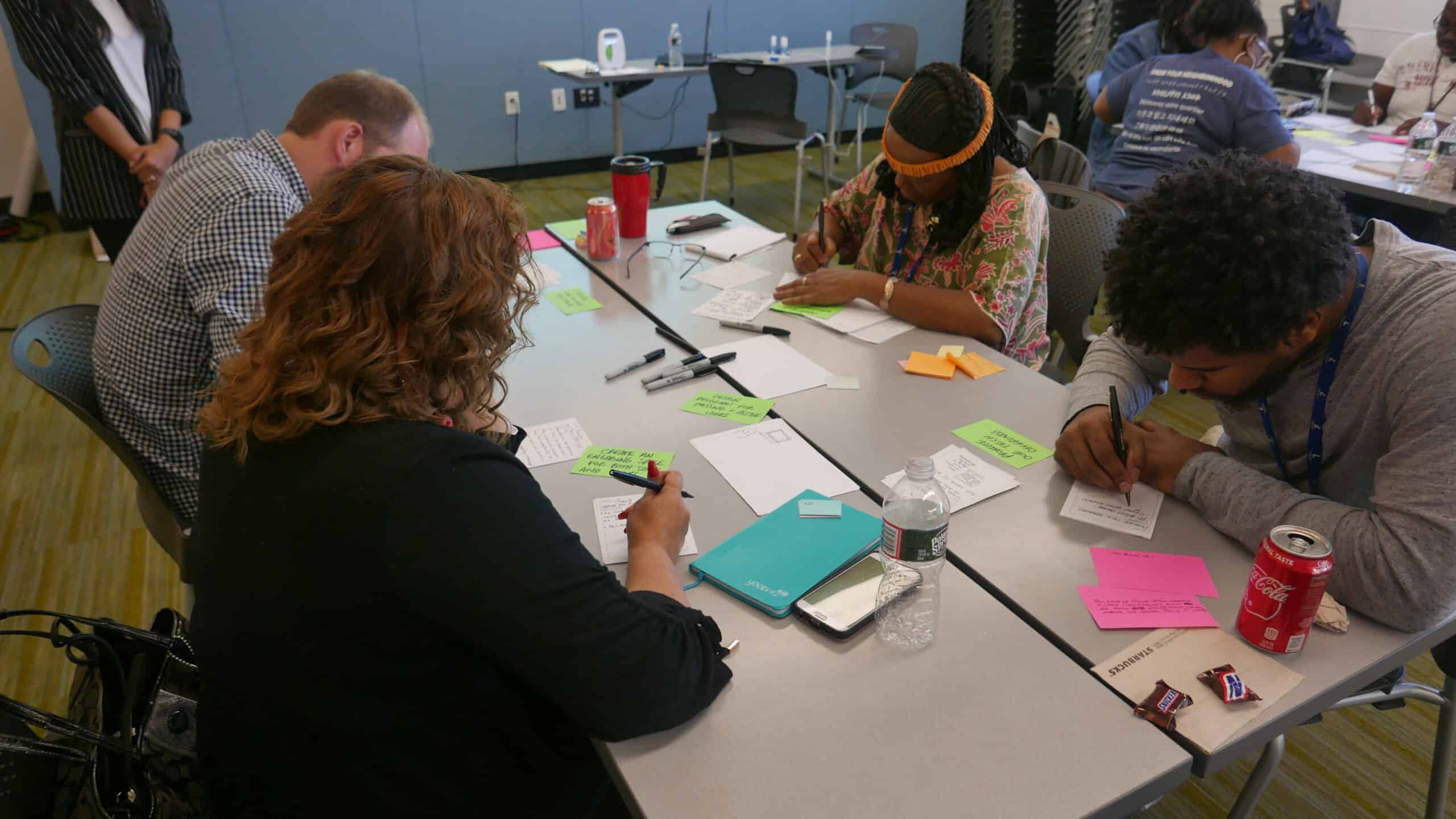
Designers are often contrasted with artists. Our work has different goals. Our processes have little in common. Why would service designers turn to esthetic theory to inform our practice?
In Art as Experience, American philosopher John Dewey describes art as an experience of transformation, both in terms of the artist’s experience while transforming raw materials into an artistic expression and the experience of a patron with the work: one that has the power to shift their perspective. As service designers, it is also our job is to facilitate transformation. If we want to transform our clients’ services and their customers’ experiences we need to transform how their employees think about their work and how teams collaborate across disciplines. One of the greatest tools we have to accomplish this kind of transformation is the workshop.
Doing and Undergoing
Over the course of an Opportunity workshop, facilitators share insights from generative research, participants work to identify opportunities to rethink the service in question, then ideate ways to improve it. This requires participants to absorb unfamiliar concepts and use these concepts in new thinking in quick succession. I have witnessed many participants struggle with this task. For some, it is very difficult to mobilize this new information and let go of their preconceived notions of the right problems to solve or the right solutions for an opportunity.
What are the ingredients for a transformational experience, one that has the power to shift perspectives and inspire new organizational thinking? According to Dewey, the two essential ingredients are doing and undergoing. Though both are necessary for a productive workshop, I want to highlight the necessity of allotting time for undergoing: time to struggle with new information and process its meaning.
Though active moments such as listening to findings or brainstorming new ideas may seem to be the most productive aspects of an Opportunity workshop, facilitators need to plan time for the process of undergoing into the agenda for a transformational experience to take place. Putting more emphasis on undergoing means planning for more discussion time, independent reflection, or breaks when reflection can happen naturally.
Transformation is Painful
Our goal in presenting insights from research at the outset of an Opportunity workshop is to present something surprising, startling, even controversial. A research read-out should make some people in the room uncomfortable. It should clash with some participants’ world-view. This is a key component of transformational experience, and giving participants ample time to struggle with these findings is key to the process of transformation and creation. Dewey writes:
Struggle and conflict may themselves be enjoyed, although they are painful, when they are experienced as a means of developing an experience; members in that they carry it forward, not just because they are there. There is… an element of undergoing, of suffering in its large sense, in every experience. Otherwise, there would be no taking in of what preceded. For “taking in” in any vital experience is something more than placing something on the top of consciousness over what was previously known. It involves reconstruction which may be painful.
For participants to develop meaningful concepts that build on new knowledge, service designers need to ensure that they plan ample time for undergoing and also recognize that this process will not be comfortable.
How do we facilitate painful reconstruction? Some participants will want to debate things that don’t match their current mental models, others will look for alternate explanations, or need time to quietly reflect on what they know and compare new information with prior experience.
Dewey outlines the necessity of a balance between doing and undergoing in this way:
Experience is limited by all the causes which interfere with perception of the relations between undergoing and doing… Unbalance on either side blurs the perception of relations and leaves the experience partial and distorted, with scant or false meaning. Zeal for doing, lust for action, leaves many a person, especially in this hurried and impatient human environment in which we live, with experience of an almost incredible paucity, all on the surface. No one experience has a chance to complete itself because something else is entered upon so speedily… Resistance is treated as an obstruction to be beaten down, not as an invitation to reflection.
Some ways service designers can achieve this balance in workshops include: extending discussion time and being comfortable when arguments arise, encouraging individual reflection writing and sharing, valuing breaks in the action for passive reflection, and planning shorter multi-day sessions rather than marathon all-day sessions when possible. These actions enable deeper engagement with new knowledge before attempting to apply it to creative work. This is necessary in order to facilitate a shift in perspective for the participants and more effectively enlist them to design human-centric concepts to transform the client’s service.